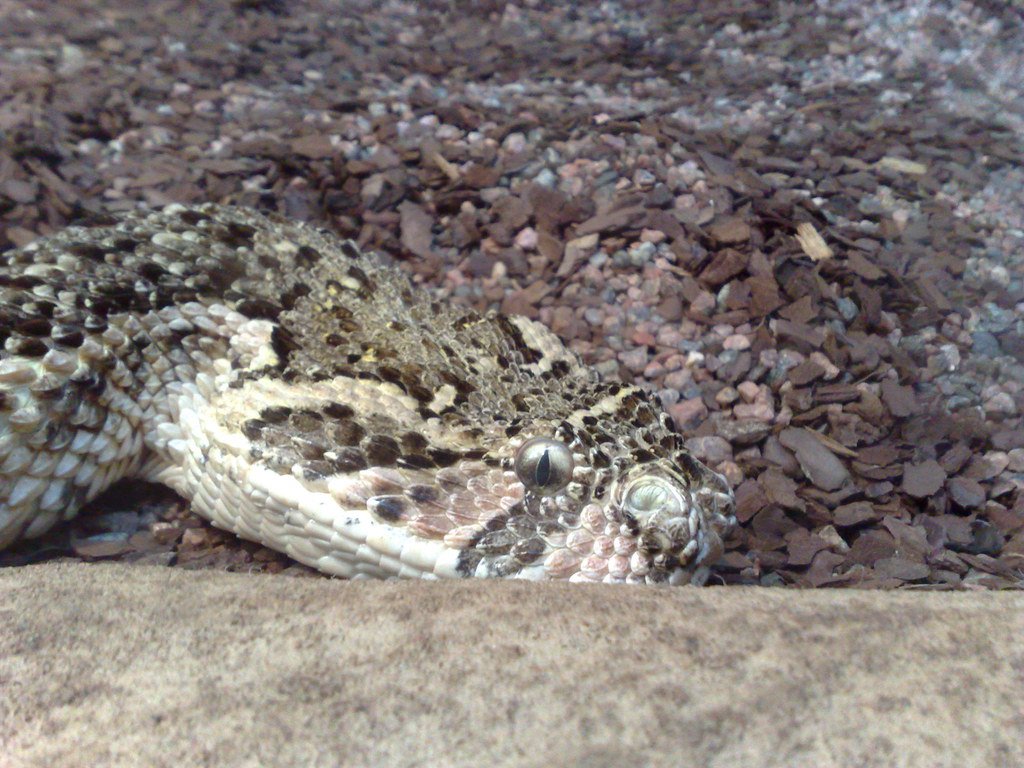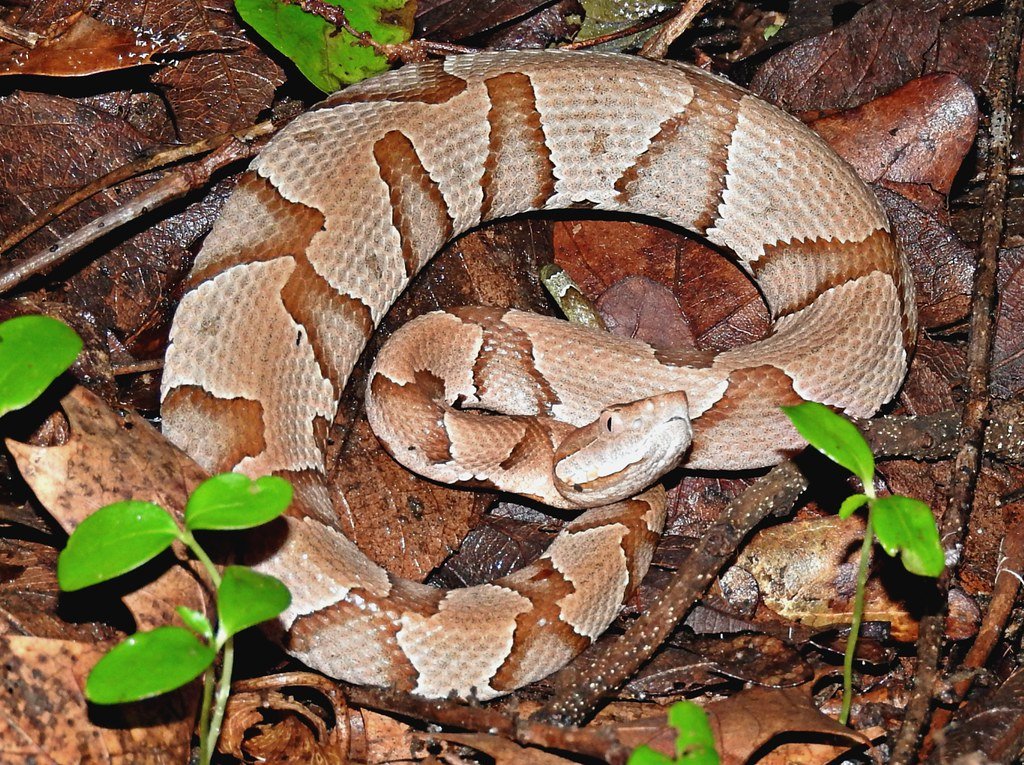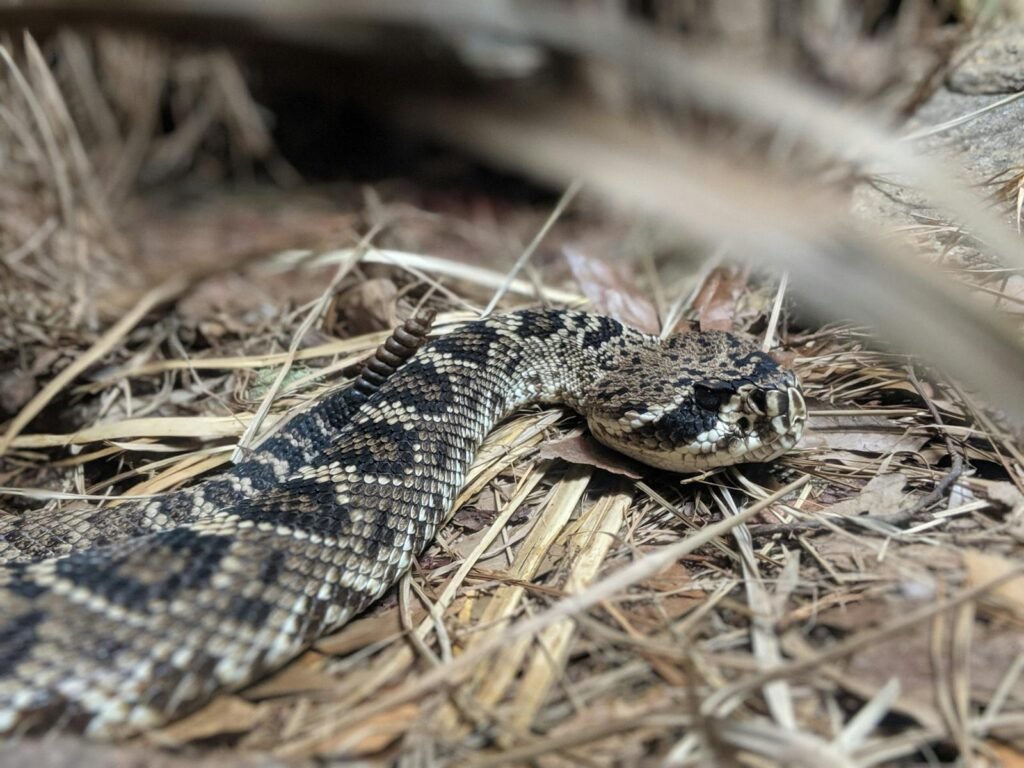Imagine walking through a forest where death lurks silently beneath every leaf, where predators can see your body heat through complete darkness, and where creatures have perfected the art of invisibility over millions of years. This isn’t science fiction – it’s the extraordinary world of snakes, where evolution has crafted some of nature’s most sophisticated biological weapons and sensory systems. These remarkable reptiles have developed abilities that seem almost supernatural, yet they’re grounded in fascinating scientific principles that continue to astound researchers today.
The Molecular Machinery of Snake Venom

Snake venom represents one of nature’s most complex and deadly chemical cocktails, containing a mixture of enzymes, proteins, and peptides that can shut down vital biological processes in seconds. This liquid death is far more sophisticated than most people realize – it’s essentially a highly specialized pharmaceutical factory operating at the cellular level. Each drop contains dozens of different compounds, each designed to target specific physiological systems in prey animals.
The production of venom occurs in specialized glands located behind the snake’s eyes, where cells work around the clock to synthesize these toxic proteins. What makes venom truly remarkable is its species-specific composition – a cobra’s venom attacks the nervous system differently than a viper’s, which primarily destroys blood cells and tissue. This specialization has evolved over millions of years, with each species developing toxins perfectly suited to their preferred prey.
Neurotoxins: The Silent Killers

Neurotoxic venoms represent the ultimate in biological warfare, targeting the very communication networks that keep animals alive. These molecules bind to nerve receptors, blocking the transmission of electrical signals that control breathing, heart rate, and muscle movement. It’s like cutting the power lines to a city – everything simply stops working.
Cobras and mambas are masters of neurotoxic delivery, with their venom containing alpha-neurotoxins that bind irreversibly to acetylcholine receptors. The victim remains conscious as their body gradually shuts down, unable to breathe or move. This precision targeting makes neurotoxic venom incredibly efficient – a single bite from a black mamba can kill an adult human in as little as 20 minutes.
Hemotoxins: The Blood Destroyers

While neurotoxins attack the nervous system, hemotoxic venoms wage war on blood and tissue, creating a different but equally devastating form of biological destruction. These venoms contain enzymes that break down red blood cells, destroy blood vessel walls, and prevent proper clotting. The result is internal bleeding, tissue death, and cardiovascular collapse.
Rattlesnakes and vipers are notorious for their hemotoxic arsenal, with their bites causing massive swelling, bruising, and tissue necrosis. The venom literally digests the victim from the inside out, breaking down cellular structures and causing organs to fail. What’s particularly insidious is that hemotoxic effects can continue for hours or even days after the initial bite, making treatment extremely challenging.
Cytotoxins: The Cellular Destroyers

Cytotoxic venoms operate at the most fundamental level of life – the individual cell. These compounds punch holes in cell membranes, disrupt cellular metabolism, and trigger programmed cell death throughout the victim’s body. It’s like releasing a microscopic army that attacks every cell it encounters, causing widespread tissue damage and organ failure.
Spitting cobras have perfected the art of cytotoxic delivery, with their venom causing immediate tissue destruction wherever it makes contact. The venom can blind victims by destroying corneal cells, create massive ulcers in soft tissue, and cause entire limbs to become necrotic. This type of venom is particularly feared because the damage it causes is often permanent and disfiguring.
The Evolution of Venom Delivery Systems

The fangs that deliver venom are marvels of evolutionary engineering, each type perfectly adapted to its owner’s hunting strategy and prey preferences. Hollow fangs work like hypodermic needles, allowing venomous snakes to inject their toxic cocktails directly into victims’ bloodstreams. These structures have evolved independently multiple times, demonstrating the incredible advantage that venom provides in the struggle for survival.
Different snake species have developed remarkably varied fang designs – from the long, hinged fangs of vipers that fold back when not in use, to the short, fixed fangs of cobras that deliver venom through grooves or hollow channels. Some snakes can even control their venom flow, delivering “dry bites” when they want to conserve their precious toxins for actual prey rather than defensive encounters.
The Art of Invisibility: Snake Camouflage

Snake camouflage represents one of nature’s most sophisticated attempts at optical illusion, with patterns and colors that can make a deadly predator virtually invisible in its environment. This biological artistry goes far beyond simple color matching – it involves complex patterns that break up the snake’s outline, disrupt visual recognition, and create confusion in the minds of both predators and prey.
The science behind snake camouflage involves understanding how visual systems process information and then exploiting those weaknesses. Snakes use a combination of background matching, disruptive coloration, and countershading to achieve near-perfect invisibility. Some species can even change their coloration slightly based on environmental conditions, fine-tuning their camouflage throughout the day.
Pattern Recognition and Visual Disruption

The intricate patterns found on many snake species serve a crucial purpose beyond mere decoration – they’re designed to confuse and disorient visual predators through a process called disruptive coloration. These patterns work by breaking up the snake’s outline, making it difficult for other animals to recognize the shape as a potential threat or meal. It’s similar to how military camouflage uses geometric patterns to make soldiers harder to spot.
Gaboon vipers represent the pinnacle of disruptive pattern design, with their complex geometric markings that perfectly mimic fallen leaves and forest floor debris. The patterns create visual “noise” that overwhelms the pattern recognition systems in predator and prey brains, essentially making the snake invisible even when it’s hiding in plain sight. This camouflage is so effective that researchers often struggle to spot these snakes even when they know exactly where to look.
Adaptive Coloration and Environmental Matching

Many snake species have evolved colorations that perfectly match their specific habitats, creating a form of biological camouflage that’s tailored to exact environmental conditions. Desert species tend toward sandy browns and pale yellows, while forest dwellers sport greens and browns that blend seamlessly with vegetation. This isn’t coincidental – it’s the result of millions of years of natural selection favoring individuals with better camouflage.
Some snakes take environmental matching to extraordinary extremes, with seasonal color changes that track environmental shifts throughout the year. Certain species can adjust their coloration based on temperature, humidity, and even the time of day, creating a dynamic camouflage system that provides optimal concealment under varying conditions. This biological color-changing ability rivals anything found in chameleons or cuttlefish.
The Physics of Infrared Detection

Perhaps the most alien of snake abilities is their capacity to see heat – literally detecting the infrared radiation emitted by warm-blooded animals through specialized sensory organs. This thermal vision allows snakes to hunt in complete darkness, track prey through dense vegetation, and detect the slightest temperature differences in their environment. It’s like having a built-in thermal imaging camera that’s more sensitive than most military equipment.
The physics behind infrared detection involves detecting electromagnetic radiation in the wavelength range between 8 and 12 micrometers – the same range used by modern thermal imaging systems. Snakes accomplish this feat through specialized organs called pit organs, which contain heat-sensitive nerve endings that can detect temperature differences as small as 0.003 degrees Celsius. This incredible sensitivity allows them to track warm-blooded prey from remarkable distances.
Pit Organs: Nature’s Thermal Cameras

Pit organs represent one of evolution’s most remarkable sensory innovations, functioning as biological thermal imaging systems that provide snakes with detailed heat maps of their environment. These organs are located between the eye and nostril in pit vipers, or along the lip scales in pythons and boas. Each pit organ contains a thin membrane stretched across a small chamber, creating an incredibly sensitive heat-detecting device.
The sensitivity of pit organs is truly astounding – they can detect the heat from a mouse at distances of up to three feet, even in complete darkness. The organs work by detecting minute temperature differences that cause the membrane to expand or contract, triggering nerve impulses that create thermal images in the snake’s brain. This system is so sophisticated that snakes can accurately strike at prey they’ve never actually seen, guided entirely by heat signatures.
Neural Processing of Thermal Information

The snake’s brain processes thermal information through specialized neural pathways that create detailed heat maps of the environment, essentially giving these reptiles a form of “thermal vision” that supplements their normal eyesight. This processing occurs in the optic tectum, the same brain region that processes visual information, allowing snakes to integrate thermal and visual data into a comprehensive picture of their surroundings.
What’s particularly fascinating is that thermal information appears to be processed faster than visual information in snake brains, giving them a significant advantage when hunting warm-blooded prey. The brain can calculate the exact position, size, and movement patterns of potential prey based solely on heat signatures, allowing for incredibly precise strikes even in conditions where visual hunting would be impossible.
Hunting Strategies and Thermal Advantage

Infrared vision provides snakes with hunting advantages that seem almost supernatural, allowing them to track prey through dense vegetation, in complete darkness, and even when the prey is hiding behind obstacles. This thermal detection capability transforms nighttime from a period of vulnerability into prime hunting time, when warm-blooded prey stands out like beacons against the cooler background environment.
Many snake species have evolved specific hunting strategies that capitalize on their thermal advantages. Some species hunt from ambush positions, waiting motionlessly for hours until a warm-blooded animal passes within striking distance. Others actively patrol their territories, using thermal cues to track prey trails and predict where animals are likely to appear. This thermal hunting ability is so effective that some species have become predominantly nocturnal, avoiding daytime competition with visual predators.
Behavioral Adaptations and Sensory Integration

Snake behavior reflects the sophisticated integration of multiple sensory systems, combining visual, thermal, chemical, and vibrational information to create a comprehensive understanding of their environment. This multi-modal sensing allows snakes to excel in diverse hunting situations, from open desert environments where visual cues dominate, to dense forests where thermal and chemical signals are more important.
The behavioral flexibility of snakes is remarkable – they can switch between different hunting strategies based on environmental conditions, prey availability, and their own physiological state. Some species hunt actively during the day using primarily visual cues, then switch to thermal hunting at night. Others use chemical trails to track prey, then rely on thermal signatures for the final strike. This behavioral plasticity is a key factor in snake success across diverse habitats.
Defensive Applications of Snake Abilities

While most people focus on the offensive capabilities of snakes, these same abilities serve crucial defensive functions that help snakes avoid becoming prey themselves. Camouflage provides protection from birds of prey, mammals, and other predators, while thermal sensing can detect approaching threats even when they’re trying to remain hidden. Venom, too, serves defensive purposes, deterring potential predators through painful or dangerous bites.
Some snake species have developed specific defensive behaviors that capitalize on their sensory abilities. They can detect the approach of warm-blooded predators using thermal sensors, then rely on camouflage to remain motionless and avoid detection. If discovered, they can use their venom as a last resort, delivering painful bites that teach predators to avoid similar encounters in the future.
Environmental Impacts and Ecosystem Roles

The sophisticated abilities of snakes play crucial roles in maintaining ecosystem balance, with these predators serving as important population controls for rodents, birds, and other small animals. Their efficiency as hunters helps prevent overgrazing and agricultural damage, while their position in food webs supports larger predators and scavengers. The ecological services provided by snakes are often underappreciated but absolutely essential.
Climate change and habitat destruction pose significant threats to snake populations, potentially disrupting the delicate balance of ecosystems that have evolved over millions of years. As temperatures rise and habitats fragment, the specialized abilities that make snakes such effective predators may become liabilities, particularly for species with narrow environmental tolerances or specific habitat requirements.
Medical and Scientific Applications

Snake venom research has led to breakthrough medical treatments, with venom-derived compounds now used to treat heart conditions, blood disorders, and neurological diseases. The precise molecular targeting of venom components makes them valuable tools for developing new pharmaceuticals, while studies of snake sensory systems have inspired advances in thermal imaging technology and artificial sensing systems.
Scientists continue to discover new applications for snake-inspired technologies, from improved camouflage materials for military use to more sensitive thermal sensors for medical imaging. The study of snake biology has also provided insights into evolutionary processes, neural development, and the molecular basis of sensory perception. These research applications demonstrate that snakes are not just fascinating predators – they’re living laboratories that continue to advance human knowledge and technology.
Conservation Challenges and Future Research

Many snake species face increasing pressure from habitat loss, climate change, and human persecution, threatening to eliminate millions of years of evolutionary innovation. The specialized abilities that make snakes such effective predators also make them vulnerable to environmental changes, particularly species with narrow habitat requirements or specific thermal tolerances. Conservation efforts must account for these unique physiological needs to be effective.
Future research directions include developing better understanding of snake sensory systems, investigating the molecular basis of venom evolution, and exploring applications of snake-inspired technologies. Scientists are also working to understand how climate change might affect snake populations and their ecological roles. This research is crucial not only for snake conservation but for maintaining the ecosystem services these remarkable predators provide.
The world of snakes reveals nature’s incredible capacity for innovation, where evolution has crafted biological systems that surpass human technology in many ways. From molecular weapons more sophisticated than anything in our chemical arsenal to sensory systems that detect heat with impossible precision, snakes demonstrate that the natural world still holds countless secrets waiting to be discovered. Their abilities challenge our understanding of what’s possible in biology while providing inspiration for breakthrough technologies that could revolutionize medicine, engineering, and our understanding of life itself. What other biological marvels might we discover if we look more closely at the creatures we fear most?




